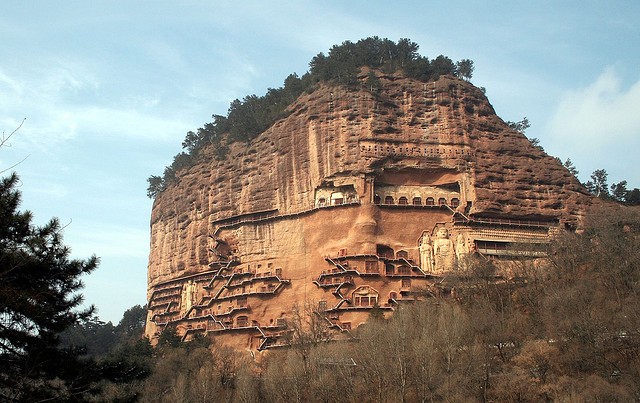Local relics protection experts recently announced efforts to digitize the inventory of ancient sculptures and artworks discovered from the Maijishan Grottoes in Gansu Province, the Global Times reported.
Preparations to digitize the archive began in 2010, according to Sun Xiaofeng, a researcher from the Art Institute of Maijishan Grottoes.
During that time, the art institute was also attempting to have the grottoes listed as a UNESCO World Heritage Site. They succeeded in 2014, when the Maijishan Grottoes were finally added to UNESCO's World Heritage List. The grottoes were added alongside the historic Silk Road, which linked China and Eurasia through cultural exchange and trade.
So far, 50 caves have been digitally mapped, while 170 others are currently undergoing the process.
"The work has proceeded slowly as images are hard to collect from the sculptures, most of which are located in narrow spaces on the cave walls," said Sun.
The gargantuan task of creating realistic images of the artworks has been entrusted to the Wuhan Huayu Century Technological Company, which has prior experience in creating 3D images. The company previously worked on the frescoes at the Mogao Caves in Dunhuang, Gansu Province.
After the archive is completed, it is reported that the caves damaged by natural erosion will be closed to the public.
"Tourists will see the digital images instead," said Sun.
No need to worry, however, as experts assure that the photos will reflect the sculpture's actual shape, texture and color.
The Maijishan Grottoes, which when translated means "Wheat Stack Hill," is a UNESCO World Heritage Site that dates back to 1,500 years ago. It is home to 10,632 Buddhist sculptures and 221 grottoes.



























